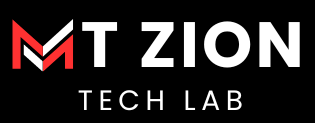Imagine a world where your coffee maker starts brewing a fresh pot as your alarm goes off, your thermostat adjusts automatically based on your preferences, and your refrigerator reorders milk when it’s running low. This isn’t science fiction; it’s the reality of the Internet of Things (IoT).
The IoT is a rapidly growing network of physical devices embedded with sensors, software, and other technologies that allows them to connect and exchange data with each other over the internet. These devices can range from everyday appliances like refrigerators and thermostats to industrial machinery and even wearables like fitness trackers.
How Does the IoT Work?
The core functionality of the IoT revolves around three key elements:
- Sensors: These tiny devices collect data from the surrounding environment, such as temperature, pressure, or motion.
- Connectivity: The collected data is then transmitted wirelessly via Wi-Fi, Bluetooth, or cellular networks to a central hub or cloud platform.
- Data Processing & Analytics: The data is processed and analyzed to gain insights, trigger actions, or generate reports.
Benefits of the IoT: Transforming Our Lives
The potential applications of the IoT are virtually limitless, impacting various aspects of our lives, including:
- Smart Homes: Control lights, thermostats, and appliances remotely, creating a more convenient and energy-efficient living space.
- Wearable Technology: Track fitness goals, monitor health vitals, and receive personalized recommendations for improved well-being.
- Smart Cities: Optimize traffic flow, improve waste management, and enhance public safety through interconnected infrastructure.
- Industrial Automation: Monitor and optimize manufacturing processes, predict equipment failures, and streamline production lines.
- Connected Agriculture: Precision agriculture techniques using sensors to optimize water usage, monitor crop health, and improve yields.
The Future of the IoT: Challenges and Opportunities
While the IoT promises a world of convenience and efficiency, there are challenges to address:
- Security Concerns: Protecting sensitive data collected by IoT devices is crucial to ensure user privacy and prevent cyberattacks.
- Standardization: The lack of uniform standards across different devices and platforms can hinder seamless communication and interoperability.
- Ethical Considerations: The vast amount of data collected by the IoT raises ethical questions about data ownership and usage.
Despite these challenges, the future of the IoT is bright. As technology advances, security protocols are strengthened, and standards are established, the interconnected world envisioned by the IoT will become a seamless reality.
Conclusion: Embracing a Connected Future
The Internet of Things is revolutionizing the way we interact with the world around us. By embracing the power of connected devices, we can unlock a future filled with smart solutions, improved efficiency, and a more personalized way of living. As the IoT continues to evolve, it’s an exciting time to be a part of this transformative journey.

